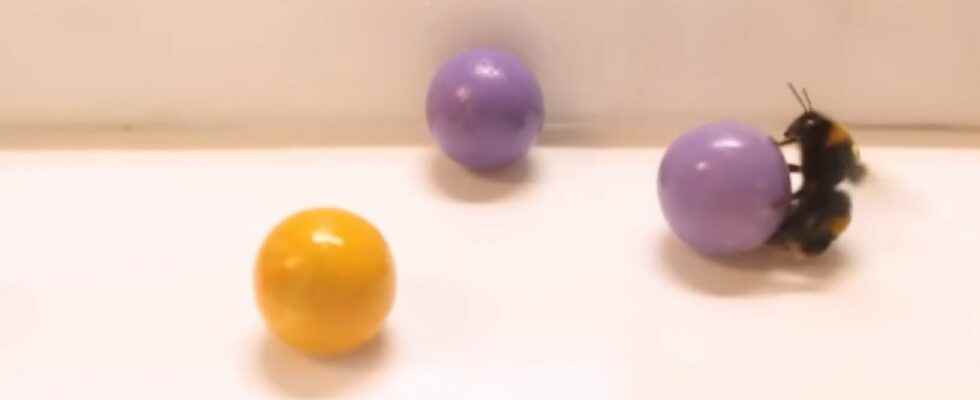An experiment shows that some insects can also have a simple amusement behavior, related to play.
What if having fun was a largely universal behavior in nature? An experiment, the results of which were published in October 2022, adds grain to this approach: bumblebees have been observed playing with balls.
” Various animals have been found to interact with inanimate objects and manipulate them ‘just for fun’, that is, to play. The most obvious examples of play with objects come from mammals and birds “, introduce the researchers, before adding that this type of behavior remains little studied, however, in insects.
Bumblebees playing football (or almost)
The authors placed 45 bumblebees in a small arena, with two choices:
- A corridor to reach an area where to eat;
- A corridor to reach an area containing small wooden balls.
The game lane was a big hit — the bumblebees all chose, at one point or another during the experiment, to roll the balls. On the Queen Mary University of London website, a video is available to see the game in action:
The authors draw five major conclusions about how bumblebees approached the game. Rolling the balls:
- Does not immediately contribute to survival strategies;
- Is intrinsically rewarding (the very act of rolling the ball, without any other specific stated goal);
- Differs from functional behavior in form;
- Is not stereotyped (each bumblebee had its own way of approaching the game, despite a repetitive form);
- Was chosen under stress-free conditions.
The authors also identified commonalities between the behavior of these insects and that well established in many vertebrates. For example, age clearly has an impact: the youngest bumblebees are those who played the most with balls. What’s more, male bumblebees approached this game on a longer delay than females, which is again a characteristic discovered in other animals.
Based on these conclusions, the study therefore demonstrates that play, for bumblebees, is a “rewarding activity” in its own right. And even positive: the researchers trained another group of 42 bumblebees to play areas associated with a color; and the bumblebees then showed a preference for any area of the color in question.
” Our results contribute to the question of susceptibility in insects and provide additional support for the existence of positive affective states in these animals. “, conclude the authors of this experiment.
